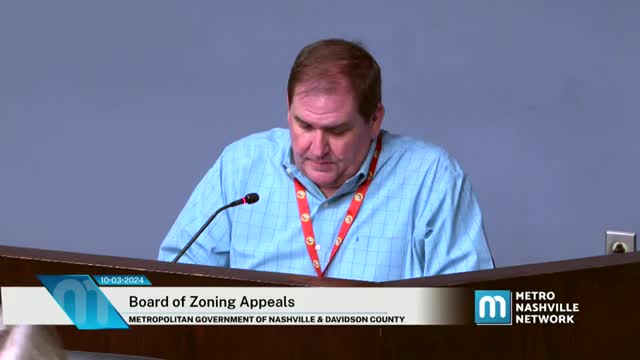Digital Billboard Controversy Sparks Heated Community Debate
October 03, 2024 | Board of Zoning Appeals Meetings, Nashville, Davidson County, Tennessee
Thanks to Scribe from Workplace AI , all articles about Tennessee are free for you to enjoy throughout 2025!

This article was created by AI using a video recording of the meeting. It summarizes the key points discussed, but for full details and context, please refer to the video of the full meeting. Link to Full Meeting
The current zoning code mandates a separation of 1,250 feet from residential areas, but the applicant is requesting a variance of 400 feet. The existing billboard is surrounded by industrial properties, and the applicant argues that advancements in digital billboard technology minimize light intrusion, with a professional light study indicating negligible impact on nearby residential areas.
John Cooper, representing Outfront Media, emphasized that the digital billboard would not only enhance visibility but also allow for the display of public service announcements and emergency alerts at no cost to the government. He noted that the billboard's location and the surrounding industrial zoning create an \"extraordinary and exceptional condition\" justifying the variance request.
However, opposition was voiced by William Hagan, a local property owner who fears that the introduction of a digital billboard would devalue his own static billboards. Hagan expressed concerns that the competitive advantage of digital signage could significantly reduce his rental income, which is crucial for maintaining his property and paying taxes. He highlighted the economic implications of the variance, stating that it could lock him out of future opportunities to upgrade his own billboards.
The board acknowledged Hagan's concerns but clarified that their decision would focus on the legal criteria for granting variances, rather than the competitive effects on other property owners. The discussion underscored the tension between technological advancements in advertising and the economic realities faced by existing billboard operators.
As the meeting concluded, the board members expressed empathy for Hagan's situation but reiterated their obligation to adhere to zoning laws and the specific criteria for variance approval. The outcome of the variance request remains pending, with implications for both the applicant and local property owners.
Converted from 10/03/24 Board of Zoning Appeals meeting on October 03, 2024
Link to Full Meeting
Comments
View full meeting
This article is based on a recent meeting—watch the full video and explore the complete transcript for deeper insights into the discussion.
View full meeting
